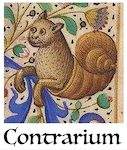Sweden. Day 4. Fifty Shades of Ice.
The Inuit supposedly have 50 different ways to describe snow. Do Swedes have 50 different ways of describing ice?
The nearby lake is now completely frozen. It’s actually brackish water, as it partly mixes with water from the sea and so has some salinity content. I thought of going ice-skating one of these days, but I’ve been warned that it can be dangerous. Ice is not equal all around. It gets thinner near rocks (which receive more warmth from the sun during the day) and near plants. Also, brackish water is less safe than pure freshwater, which freezes faster.
Apparently, experienced skaters can determine the thickness of the ice just by the sound the skates make when sliding on it. But I’m very, very far from being an experienced skater. And even experienced skaters are known to have fallen into the deep, cold ice, as the ice cracks. Getting out is not so easy: somebody has to pull you with ropes, and they have to be strong, and you can have hypothermia in the meantime. So perhaps I’ll have to rethink that idea…
I didn’t do much yesterday as I had other work to do, but perhaps today’s post can be used for a little geographical description of the place.
I am staying here in the Björkö-Vaddo island, which is part of the Stockholm archipelago and is located 110 km to the northeast of Stockholm. Björkö is the southern part of the island, Vaddo the northern part. The island is separated from the mainland by a narrow canal, which is now artificial but was once natural. Arholma is another smaller island next to Björkö. “Björkö” means simply “birch tree” in Swedish, and there are many of those around here, along with pines.
Fans of the Stockholm archipelago include the novelist, playwright, painter, photographer and really multitalented artist August Strindberg, who lived for a while in the island of Kymmendö and wrote a novel based on that — although that island is much further to the south, and not easy to get to from here. Fårö, where Ingmar Bergman lived and made some films, is even farther south and is no longer part of the Stockholm archipelago, but part of the province of Gotland. It’s also not easy to reach from here.
Sweden is much larger than I imagined. Initially I thought I could travel to the northern part of the country, where the Sami people live — tough chance. That’s way up north near the Arctic and it takes a 20 hour journey covering more than 1,000 km to get there. So it will have to be some other time. As in Canada, most people in Sweden live in the southern part; the North is mostly reserved for a few Sami and reindeers.
Another interesting thing about Sweden is the “Right of Public Access” law, or Allemansrätten, which allows people to roam almost anywhere outdoors, even if it is private land, as long as they don’t break anything or get too close to people’s homes (about 70 m away it’s safe). Around here in Björkö, since the houses are mostly holiday homes and hardly anyone is around this time of the year, it doesn’t make much difference, but it’s good to know.


